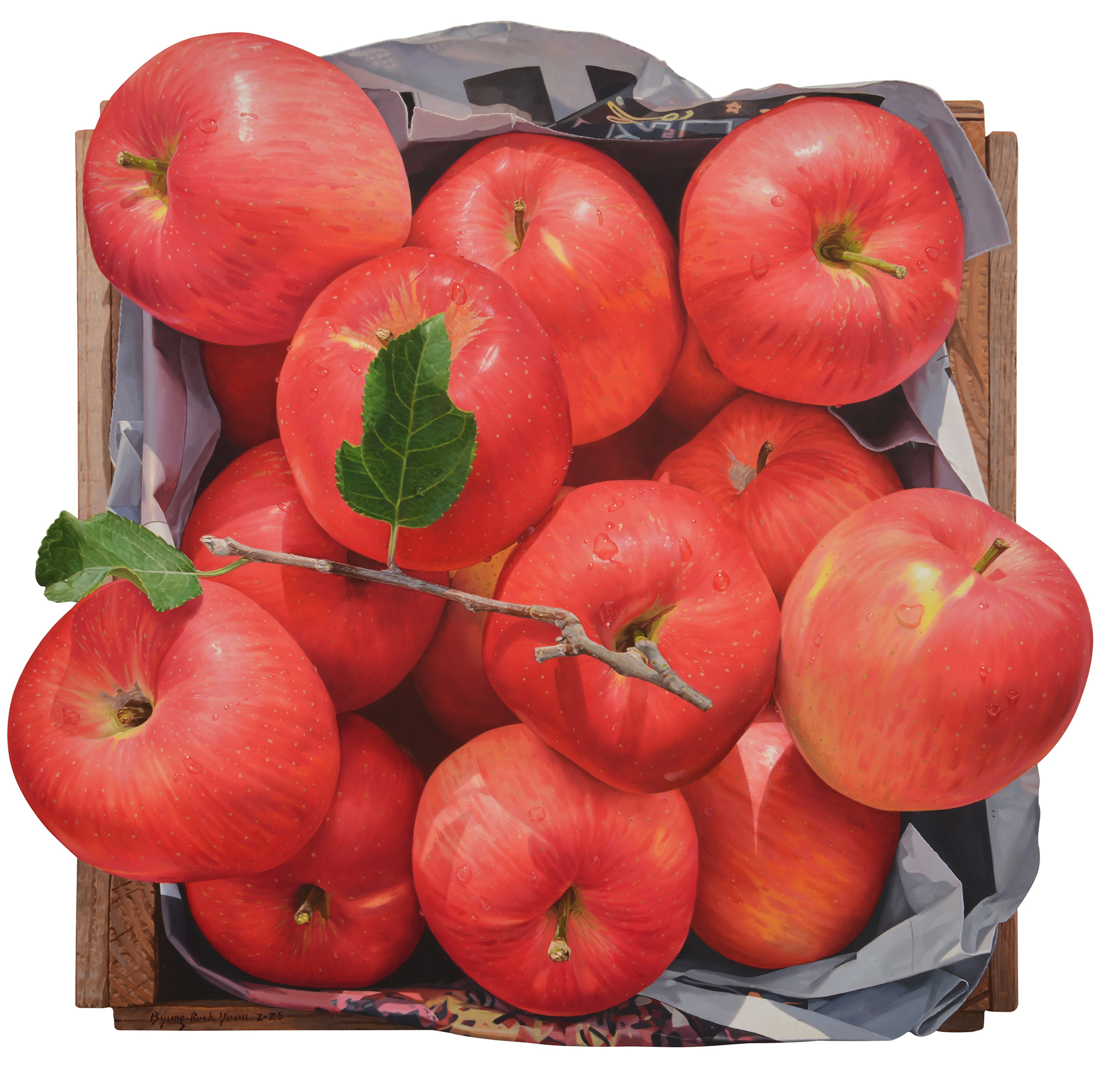꽃의 승리
2024. 3. 1 - 3. 21 | [GALLERIES] ELIGERE
마리나 이글레시아스

Installation view, Marina Iglesias: El Triunfo de las Flores (The Triumph of Flowers), March 1 – 21, 2024. Artwork © Marina Iglesias. Courtesy of the Artist and ELIGERE. Photo: Heesoo Park
“몇 년 전, 저는 ‘꽃의 승리’라는 문구를 접한 후 지금까지 이 문구에 매료되어 있습니다. 이 문구는 계절의 주기를 지능적이고 정확하게 조율하는 자연계에 대한 경이로움을 반영합니다.

Installation view, Marina Iglesias: El Triunfo de las Flores (The Triumph of Flowers), March 1 – 21, 2024. Artwork © Marina Iglesias. Courtesy of the Artist and ELIGERE. Photo: Heesoo Park
‘엘 트리운포 데 라스 플로레스’는 봄의 귀환과 꽃의 부활을 상징하며, 섬세하면서도 탄력적인 아름다움을 구현합니다.

Installation view, Marina Iglesias: El Triunfo de las Flores (The Triumph of Flowers), March 1 – 21, 2024. Artwork © Marina Iglesias. Courtesy of the Artist and ELIGERE. Photo: Heesoo Park
이 콘셉트는 호메로스의 ‘데메테르의 찬가’에 나오는 페르세포네와 데메테르의 그리스 신화를 테마로 연결했습니다.

Installation view, Marina Iglesias: El Triunfo de las Flores (The Triumph of Flowers), March 1 – 21, 2024. Artwork © Marina Iglesias. Courtesy of the Artist and ELIGERE. Photo: Heesoo Park
데메테르의 딸인 페르세포네는 하데스에게 납치되어 그의 아내가 되었고, 데메테르는 결국 노파의 모습으로 엘레우시스로 향하는 여정을 떠났습니다. 그곳에서 그녀는 어린 데모폰을 불멸의 존재로 만들려고 했으나 소년의 어머니의 방해로 계획이 좌절되었습니다.

Installation view, Marina Iglesias: El Triunfo de las Flores (The Triumph of Flowers), March 1 – 21, 2024. Artwork © Marina Iglesias. Courtesy of the Artist and ELIGERE. Photo: Heesoo Park
데메테르가 지상의 의무를 포기하자 기근이 발생했고, 제우스는 페르세포네의 귀환을 협상하도록 강요했습니다.

Installation view, Marina Iglesias: El Triunfo de las Flores (The Triumph of Flowers), March 1 – 21, 2024. Artwork © Marina Iglesias. Courtesy of the Artist and ELIGERE. Photo: Heesoo Park
하지만 석류 씨앗으로 속인 하데스의 계략으로 페르세포네는 일 년 중 일부 기간 동안 지하세계에 갇히게 됩니다.

Installation view, Marina Iglesias: El Triunfo de las Flores (The Triumph of Flowers), March 1 – 21, 2024. Artwork © Marina Iglesias. Courtesy of the Artist and ELIGERE. Photo: Heesoo Park
페르세포네가 일 년 중 일부는 하데스와, 나머지는 올림포스에서 데메테르와 함께 보낸다는 설정은 계절의 순환을 반영하며, 지하세계에서의 시간은 겨울을 상징하고 그녀가 돌아오는 것은 봄을 예고합니다.

Installation view, Marina Iglesias: El Triunfo de las Flores (The Triumph of Flowers), March 1 – 21, 2024. Artwork © Marina Iglesias. Courtesy of the Artist and ELIGERE. Photo: Heesoo Park
농경의 순환과 삶과 죽음의 신비에 대한 우화로 해석되는 이 신화는 삶과 죽음, 재생의 순환을 기념하는 농경 숭배인 엘레우시니안 신비의 근간을 이루고 있습니다. ‘엘 트리운포 데 라스 플로레스’는 이 신화의 중요한 순간에서 영감을 받아 페르세포네의 여정과 데메테르의 보살핌을 받는 자연의 회춘의 본질을 담아냅니다.

Installation view, Marina Iglesias: El Triunfo de las Flores (The Triumph of Flowers), March 1 – 21, 2024. Artwork © Marina Iglesias. Courtesy of the Artist and ELIGERE. Photo: Heesoo Park
궁극적으로 이 전시는 신화와 인간의 경험 사이의 관계를 다루고 있습니다. 특히 페르세포네의 납치 에피소드를 비롯한 다양한 표현으로 유명한 이 찬가를 통해 미술사적 측면도 조명합니다. 개인적으로 저는 자연과 역사, 그리고 우리 삶에서 일어나는 순환에 대한 성찰을 수용과 낙관주의, 꽃과 봄의 귀환, 그리고 아직 오지 않은 모든 좋은 것에 대한 확신으로 표현하고 싶었습니다.”
마리나 이글레시아스

마리나 이글레시아스(b. 1991)는 스페인에서 태어나 현재 발렌시아에서 거주하며 작업하고 있습니다. 회화와 조각에 대한 그녀의 관심은 재료에 대한 탐구와 관객의 참여를 유도하기 위한 질문의 과정을 중심으로 이루어집니다. 이와 관련하여 그녀의 작품은 아비 워버그가 제안한 미술사에 대한 비선형적 접근 방식에서 영감을 받아 시간을 초월하여 이미지를 연결하고 현대적 관련성을 부여합니다. 그녀의 예술의 중심에는 역사의 내러티브, 우리가 물려받은 집단적, 개인적 유산, 환상과 현실 사이의 상호작용에 대한 탐구가 있으며, 이를 통해 우리의 인식을 성찰하도록 유도합니다.
이글레시아스의 그림은 민속, 중세 및 르네상스 예술, 신화, 타로, 고대 과학 삽화에서 영향을 받았습니다. 그녀는 동물, 꽃, 잎이 무성한 나무로 가득한 울창한 풍경 속에 친숙한 요소와 상상 속 요소를 결합하여 생명이 번성하는 동시에 취약해 보이는 꿈결 같은 초현실주의적 장면을 만들어 냅니다.
엘리제레
서울시 강남구 압구정로 79길 55
02-518-4287
[GALLERIES] ELIGERE
- Dates
- 2024. 3. 1 - 3. 21











